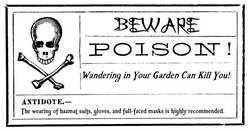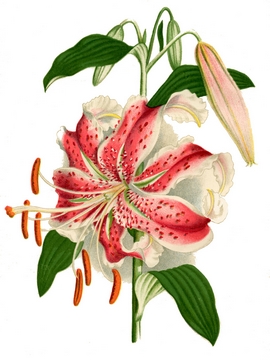
Hazmat Suit Not Required -By Debbi Decker
It all started out innocently. While writing last month’s article about creating a moon garden, I ran across references to this or that plant being poisonous. I read fascinating articles referencing some very famous supposed poisoners. Lucretia Borgia, Agrippina (Nero’s mother), and the goddess, Circe, to name but three. The lovely scented Oleander, which grows almost like a weed in parts of the south, is a deadly plant and one featured in a legend told about the Magnolia Plantation in Louisiana. Ricin, which comes from the castor plant, is one of the most lethal poisons out there and is used to this day. We all love Mistletoe and Poinsettias at Christmas. Intrigued, I decided to do a little research about poisonous plants in our garden. And then I took a look around my own yard and plant choices.
Rhododendron. Check.
Hydrangea. Check.
Hellebores. Check.
Stargazer Lily. Check.
OMG! I’m going to die. I feel itchy, nauseous, dizzy…. Call the doctor! Order the coffin!
Well, that was my first reaction. But, seriously, we can take a step back and look at this realistically. There are numerous popular toxic plants throughout the world that adorn gardens everywhere and yet we see no news reports of masses of people dying after spending time in their gardens. Some people even cultivate these plants on purpose. Alnwick Garden in Northumberland, England comes to mind. There was the famous Medici garden in Padua Italy, and another garden lies behind Blarney Castle in Ireland. In some cases, these were planted specifically as a collection of poisonous plants. In other cases, the gardens gained reputations as being poison gardens simply by association with the legend and lore of the particular gardener or owner. And as a rule, those of us who plant gardens for medicinal uses are always going to have a plant or two that doubles for both healing and harm. Stories abound regarding the Witch or Sorceress who used a common plant found in her garden for healing or for nefarious means.
It was a huge surprise to me, however, just how many plants I own that are truly poisonous, not only to humans but to the various wildlife around me. For instance, I adore Hydrangeas and have one that was given to me many years ago and which has survived several re-plantings as I dug it up to take with me as I moved. The plants contains cyanide. In Japan, one species of the plant is used for tea! Rhododendron, a very popular landscaping bush, is highly toxic to horses and there have been historical reports of people becoming ill after eating honey from bees feeding on the pollen of the flowers. My neighborhood contains hundreds of these bushes. Yikes!!
Another favorite is Hellebore or Lenten Rose. I have masses of these around my home and love them because they bloom in late winter and bring a smile because when they do bloom I know spring is just around the corner. But prolonged skin contact with the seeds can cause rashes and the roots can cause vomiting and diarrhea. In the past, parents would use this plant to help treat worms in their children. Which, according to some of my research, may well have caused death in some of those children. One as to wonder if all of those deaths were innocent.

And what about that gorgeous Star Gazer Lily that I have nursed and coddled for years for its exquisite scent and bloom? Yep. Also referred to as “death lily”. Many species of lilies are toxic, such as Lily of the Valley, Rain Lily, and more.
So, what’s a gardener to do? There are even more plants such as Monkshood, Foxglove, and even the lovely Daisy, that can be harmful. Do we don hazmat suits, gloves, and full-face masks whenever we want to do a bit of weeding?
Common sense prevails. While the feel of dirt on bare hands can be therapeutic to some, gardening gloves were probably invented for a reason other than to protect milady’s delicate hands. If you have children or pets, reading up on and identifying the plants in your area is of the utmost importance. I recall our local park gardeners planting the most beautiful lilies I had ever seen and I was anxiously waiting for seeds to form. I had no idea what type of lily it was (though I later found out) but it smelled heavenly and I wanted one. It did not take long for all of those plants to disappear. It seems someone more knowledgeable reported to the authorities that this particular lily was highly poisonous to both humans and animals and therefore not suitable for a public park. What was that lily? Trumpet Lily. I still covet them although I am not in a suitable planting zone to grow them. Research is key. We should all know what is around us to protect ourselves, family and pets. Even those who own no pets and live alone should be aware, because little children are known to wander and the local wildlife can suffer from introduction of a plant not commonly found in their feeding locations.
Common sense also tells us that if we do have these kinds of plants in our gardens, they need to be located far away from any plants or herbs that we harvest for consumption. Imagine the embarrassment (never mind the frownie face the Judge will have) over the passing of Auntie Ludmilla after consumption of that meal you garnished with herbs from your very own garden. We know you did not intend this result. But still….

Debbi Decker is proprietor of Crazed Poppet Creations Art & Assemblage Emporium. Check out her artist page to find links to her shop and blog to read more of her writings. Visit again next month for the telling of hauntings and ghostly tales by Debbi Decker.
